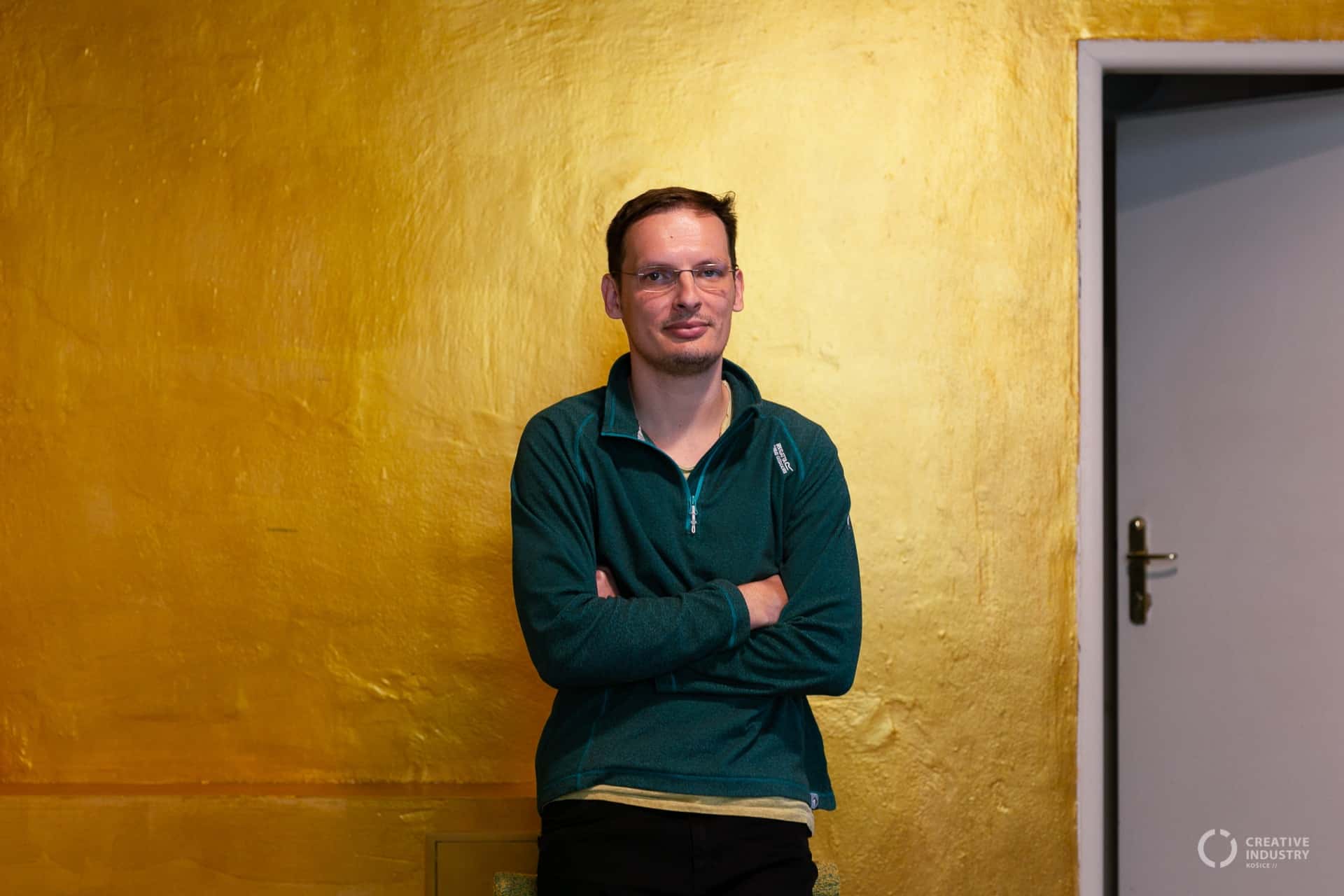Imagine you work in the Košice creative industry, you create for living, but suddenly a pandemic comes into your life and changes it. This is reality and at the same time the latest work of the artist Róbert Rampáček. During his two-month Home Residency, he worked on the script for the pilot part of the animated series. Read about his past work, his ambitions and experience.
Pandemic home residency
When writing, the most important things are stimuli. Sometimes one is enough, sometimes more are necessary and the author often perceives them only subconsciously. Robo says that the March pandemic triggered the creative process for him after different thoughts and impulses accumulated in him. “I was fascinated when everyone started wearing a face mask from one week to another. I met 80% less people on the streets and everyone had a face mask on because they knew it was important. I walked around, listening to music and thinking about the atmosphere in this, usually lively, city. I invented a fictional character who lives and creates here when suddenly a pandemic situation occurs and I tied the whole story to my own life,” he adds. At the time we published the open call for Home Residency, Robo had already written a few pages and he says that the obligation to materialize his ideas in the application was helpful in creating the script. The fact that he found himself among the five selected residents reassured him that his idea is meaningful.
Everything is fragile. Really fragile
In Robo’s scenario, a hero named Richard, who works in the local creative industry, finds himself in the middle of closed-off Košice. The pandemic, the presence of which is much more noticeable than what we experienced in real life, has shifted the demand to the online sector. “Richard realises that the way in which he was working before the pandemic is no longer possible and he is looking for ways to support himself and his family,” Robo explains. The motif of the story is the resistance of part of the population to measures, the strengthening of the competencies of the military, which are getting out of control and the hero can only adapt to them. He likens the atmosphere of the story to the situations in Slovak Roma camps during the corona crisis. The city’s borders are closed with both healthy and infected people in it, and Robo wonders to what extent the hero can adapt to the higher good, because that is the most important thing in the given situation. “Patrol vehicles drive around the city and drones fly over it, which controls the movement of the inhabitants. It all takes place in the well-known streets of Košice – Zámočnícká and Mäsiarská,” he adds.
There is no catharsis or happy ending at the end of the story. “Many people say that we should value freedom and everything we have because it is very fragile. No matter how hard we try, in the end it will always work out. I want to give the story an ending so that the viewer can take something from it, but I also want to leave room for a sequel. Ultimately, it will have a good ending,” explains Robo. He will transform the screenplay he wrote into an animated film in the Onomatopoje studio together with other designers.

Always available self-education
Robo stated in the application that one day he would like to become a playwright to take his work to a higher level. He would like to be a mediator between the audience and the creative team, who enters the process during production, understands the authors’ efforts and can assess what the audience will be interested in – an issue that already interested him during his documentary film studies. “There are things one is sure about and those about which, on the contrary, one is not so sure – the latter prevail. When I realized that I felt confident in the field of dramaturgy, I already graduated from school and I thought it was too late – I started to learn about this field on my own.”
In 2010, he founded a documentary film festival in Košice called DOCsk. It was during a time when several documentary filmmakers completed their films for foreign festivals. “I thought it would be great if they could present their works at home before they go out into the world. The problem was that we couldn’t find an audience for it. At that time, the Slovak Ministry of Culture had a special grant scheme for the city of Košice. Everything was getting started here and everyone in the city was organizing something. We stopped organizing the festival after 3 years,” explains Robo.

The first round of Home Residencies was organized as part of the Cultural and Creative Spaces and Cities project, which aimed to connect citizens with the local government through the preparation of a new cultural strategy, workshops, and various research activities. As the project’s activities were suspended due to the COVID-19 pandemic, we decided to prototype this new form of support for artists, thanks to which they could continue to work on their projects from the safety of their homes.
In addition to Ľudka’s project, we supported two other projects that thematically fit into the project’s goals. Fashion designer Ľudka Žoldáková sophisticatedly merged the majority with the minority in her collection. Juraj Horňák researched unused and abandoned spaces in Košice with the help of a shopping cart and asked the public to explore these sites with him.
The project is co-funded by the Creative Europe Programme of the European Union.







